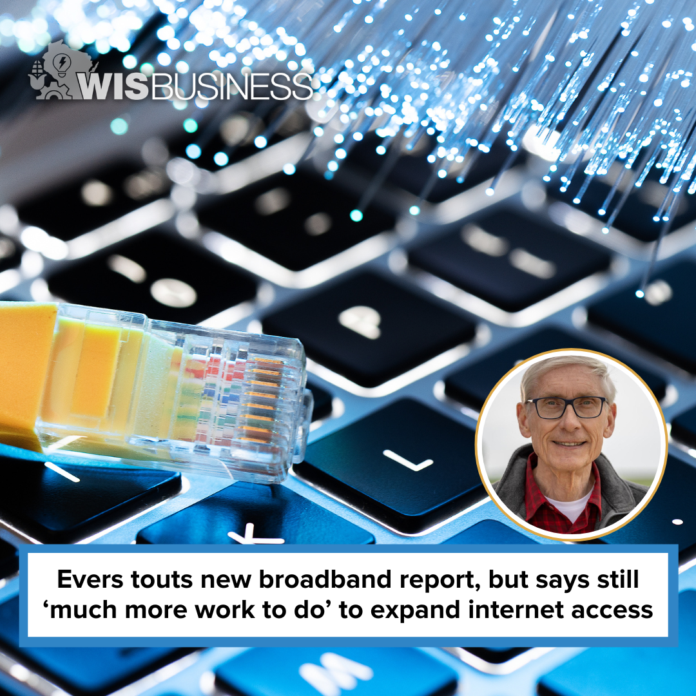Gov. Tony Evers is touting a new report showing continued progress in expanding internet access for Wisconsinites, while also calling for more state investment.
Internet providers added 163,000 new fiber internet connections to homes and businesses in the state last year, and 93,000 previously unserved locations now have high-speed internet access, the Governor’s Task Force on Broadband Access report states. The number of unserved locations went down 28% and nearly 90% of households have internet subscriptions.
Evers in a statement said while he’s proud of the progress that has been made, there is “much more work to do.”
“Whether running a business, doing homework, talking to your doctor, or staying connected to friends and family, the digital divide is holding our state back,” Evers said. “We must do more to ensure Wisconsinites—no matter where they live—have access to affordable, high-speed internet, and I want to thank the PSC and this Task Force for outlining these important steps and priorities to continue moving toward the future of connectivity Wisconsin needs and deserves.”
Evers proposed investing $400 million in Wisconsin’s Broadband Expansion Grant Program, but the GOP-led Joint Finance Committee stripped the funding from the state budget.
His administration has argued the restructuring of the federal Broadband Equity, Access, and Deployment program under the Trump administration will lead to delays in getting that funding out the door. The state was allocated more than $1 billion under the program to boost internet access.
According to the PSC’s Wisconsin Broadband Office, 39% of Wisconsinites still don’t have access to affordable internet, and 262,000 locations — 11.4% of locations — are considered unserved.
The report makes several recommendations, such as additional state budget investment in broadband expansion, providing technical support to BEAD recipients and internet service providers, and investing in and supporting workforce development efforts, youth apprenticeships, workforce training programs and awareness campaigns.
The report also notes several federal funding sources that provided aid for broadband access have been cut off – including the loss of $13 million in State Digital Equity Planning and Capacity grants in May and the termination of the Affordable Connectivity Program last year.
Read the full report here.






